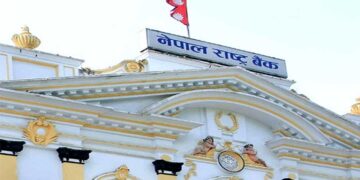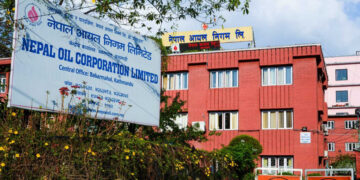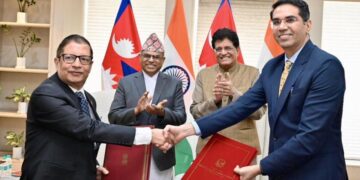Pokhara, long admired for its tranquil lakes, lush hills, and breathtaking Himalayan backdrop, is gaining increasing attention from thrill-seekers drawn to adventure sports such as paragliding, ultra-light flights, hot air balloon rides, and skydiving.
Adventure tourism, along with nature and cultural attractions, forms a key pillar of Nepal’s tourism industry, and Pokhara has established itself as one of the nation’s most prominent adventure destinations.
Each year, a significant number of domestic and international tourists arrive in the city to enjoy adrenaline-filled activities. Skydiving was first tested in Pokhara in 2010/11, and since then, the sport has mainly taken place in October and April.
According to Nirmal Pandey, Director of Insky Skydiving Company, skydiving operations are being carried out in partnership with Simrik Air at the Air Sports Practice Ground of Avia Club in Pame, Pokhara.
Pandey emphasized that Nepal’s tourism sector could benefit greatly if skydiving were allowed to operate on a regular basis rather than under temporary permits. Skydiving companies have long urged the Civil Aviation Authority of Nepal (CAAN) to grant a Recreational Aviation Operation Certificate (RAOC), he said.
Although the Ministry of Culture, Tourism, and Civil Aviation has authorized recreational aviation services, companies have been unable to fully operate skydiving on their own, as RAOCs have not yet been issued. As a result, operators must make separate agreements with helicopter service providers.
“Allowing skydiving for only 15 days at a time makes it difficult to properly promote and manage the business,” Pandey said. “The lengthy and complicated permit procedures add to the challenges.”
He added that once RAOCs are granted, companies would be willing to invest in expanding skydiving services, which would help increase government revenue and create employment opportunities.
Pandey further noted that Nepali instructors—once overshadowed by foreign professionals—now play a leading role in Pokhara’s skydiving operations.
CAAN Information Officer Gyanendra Bhul said Pokhara is an ideal location for skydiving. “Preparations are underway to promote Pokhara and Syangboche in the Everest region as premier skydiving destinations. Repeated successful flights and landings have demonstrated strong potential in both areas,” he said.
Bhul confirmed that CAAN has initiated the process of issuing RAOCs to companies that meet required safety and operational standards. “Some companies are already in contact with us. We aim to issue RAOCs within this fiscal year or by next year at the latest,” he said. “Once a company receives the certificate, it will be able to operate skydiving regularly without frequent approvals.”
Pandey shared that his company currently employs Nepali instructors, including Elis Thapa, who trained in China, Thailand, and Dubai. According to Thapa, there are three skydiving packages offered in Pokhara: Deluxe (Rs 95,000), VIP (Rs 115,000), and Diamond (Rs 150,000). For foreign tourists, the prices are USD 750, USD 900, and USD 1,200 respectively.
Other instructors include Subash Thapa, Manish Hirachan, and Yasoda KC Thapa, Nepal’s first female skydiver. Jumps are conducted from helicopters flying more than 3,000 feet above ground level.
“Pokhara has immense potential to expand as a hub for adventure sports, including skydiving,” Instructor Thapa said. “Regular operations would contribute to the national economy and generate jobs. We are hopeful that CAAN will soon issue the RAOC and help establish a well-regulated skydiving environment in Nepal.”










